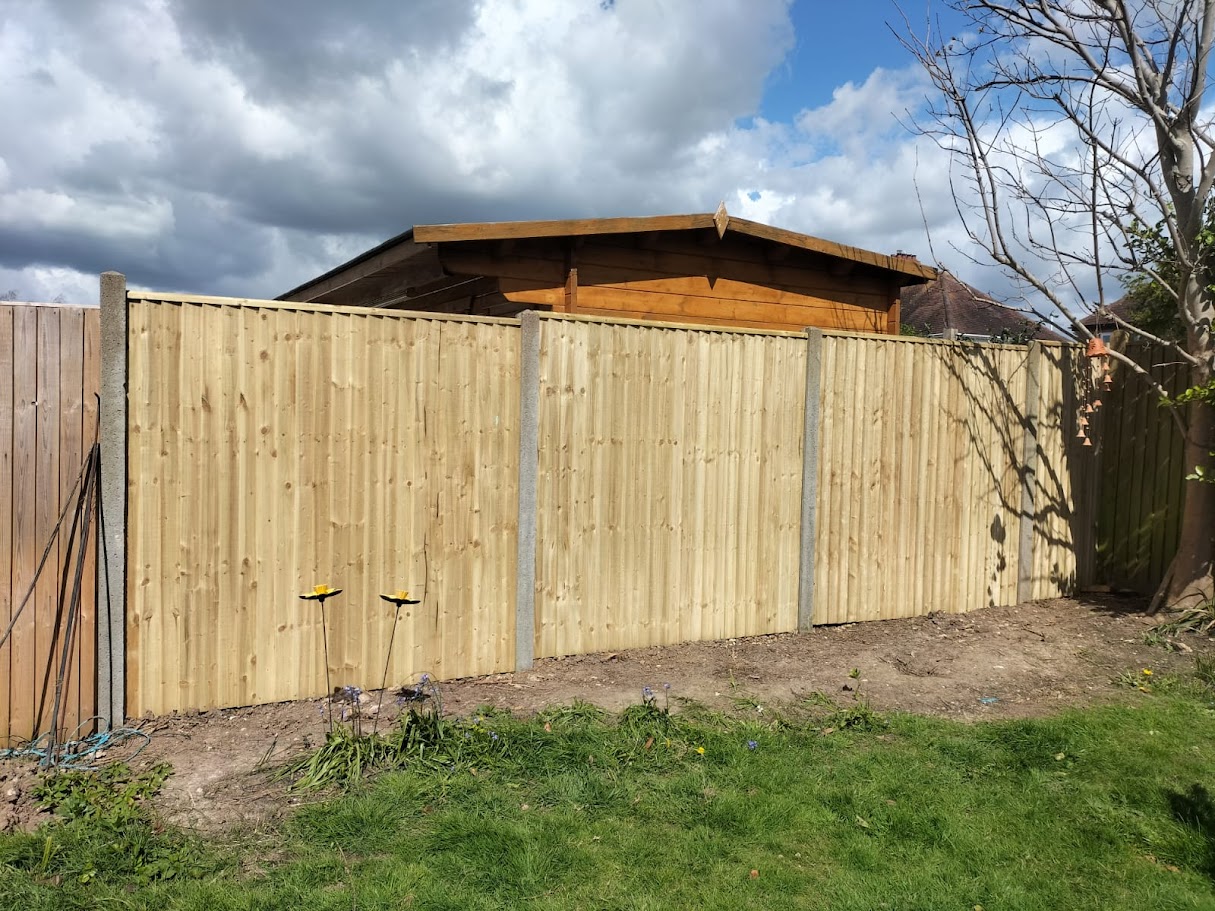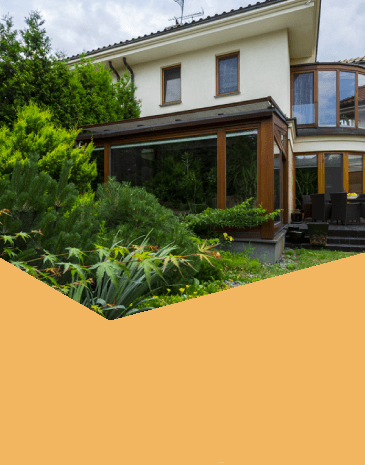

Close boarded fencing is quintessentially British, epitomising privacy and security in a timeless design.
Imagine your backyard, a private haven shielded by a fence – but what exactly are close board panels that fortify your seclusion?
Close board fencing, synonymous with solid, durable barriers, epitomises homeowners’ preference for privacy and security. Its robust nature withstands adverse weather conditions.
Constructed from vertical feather edge boards fixed to horizontal rails, this fencing ensures a contiguous barrier devoid of gaps, exemplifying a fortification of one’s perimeter. Aesthetically versatile, close board can be painted or stained to blend with its surroundings.
Prepare the area carefully before commencing.
To install wood-close board panels effectively, you must start with a clear and level working area. Ensuring that the site is clear of obstructions and debris is critical. Postholes should be spaced consistently, conforming to the width of the panels, and should be dug to a depth that provides sufficient anchorage.
It is essential to brace the posts in a manner that is plumb—vertically straight—before attaching the panels. The panels should be meticulously aligned and fixed to the posts with high-quality fixings to maximise the stability and longevity of the fence.
A vital final step in the installation of your wood close board panels is to apply a preservative treatment.
The resilience of wood close board panels predominantly hinges on the materials’ intrinsic properties and external protective measures. Optimal wood selection, such as pressure-treated timber, endows the panels with inherent resistance against decay and insect damage. Regular maintenance inspections and swift remediation of compromised sections will fortify the wood close board panel’s defensive capabilities, preserving its structural integrity and aesthetic appeal for years to come.
The calibre of timber used in close board panels is paramount, with choice species offering superior durability and resilience to environmental stressors. Only wood of high quality should be selected, ensuring it has undergone rigorous processes to grade and classify it based on strength, density, and resistance to decay.
Proper treatment of wood is integral to prolonging the lifespan of close board fencing. Timber that has been pressure-treated provides a robust defence against fungal growth and wood-boring insects.
To ensure that wood retains its treated properties, regular reapplication of wood treatment products is recommended. Over time, exposure to environmental factors causes the initial treatments to diminish, necessitating a fresh layer to restore the protective seal against moisture and pests.
Wood-close board panels are inherently susceptible to the whims of weather, being natural materials with a propensity for absorbing moisture. However, with correct treatment and maintenance, they can repel the incursion of water and stand resilient to varying climactic conditions.
The incorporation of water-repellent preservatives during the manufacturing process is imperative for ensuring the longevity of the panels. These chemical compounds saturate the wood fibres, creating a hydrophobic barrier that resists not only precipitation but also the insidious effects of humidity and dew. Without such treatments, the wood would swiftly succumb to rot and fungal attacks, compromising the fence’s structural integrity and aesthetic appeal.
Moreover, ultraviolet (UV) light from the sun poses a significant risk, causing colour degradation and structural weakness over time.
Visible rot or decay necessitates immediate action.
When inspecting your wood close board panels, there are clear indicators that signal the need for replacement. If you notice substantial cracking, warping, or areas of rot that compromise the structural integrity of the fence, a simple repair may no longer suffice.
Panels affected by severe weather events should be assessed.
The need for panel replacement can arise abruptly – particularly after extreme weather conditions. Strong winds and heavy rainfall can exert undue pressure, leading to damage that merits urgent attention. In these instances, timely intervention prevents further deterioration and ensures the continued security and privacy provided by your fence.
Immediate safety hazards justify prompt replacement.
If a panel poses a risk – perhaps it is no longer securely attached or presents sharp, splintered edges that could cause injury – immediate replacement is not just advisable, but necessary. Procrastination in these scenarios could result in harm to people or property, a situation every homeowner seeks to avoid.
Regular maintenance influences the panel’s lifecycle.
It is prudent to regularly evaluate the condition of your panels against the backdrop of changing environmental factors and regulations. Compliance with contemporary standards ensures not only the aesthetic appeal and functionality of your fence but also aligns with the best practices for residential property upkeep established in the year 2023 and beyond. This diligence guarantees the optimal performance and legal conformity of your fencing for years to come.
Wood-close board panels are synonymous with robust, timeless aesthetics, providing a harmonious backdrop to any garden. Their sturdy construction and clean lines deliver a sense of privacy while complementing a property’s landscape.
Uniquely versatile, these panels can suit a variety of stylistic preferences, enabling property owners to stain or paint them in a spectrum of colours. This customizability allows individuals to seamlessly integrate their fencing into the prevailing design ethos of their residences, enriching the garden’s visual narrative.
The inherent “close-knitted” and “full-coverage” design of these panels offer not only seclusion but also a polished appearance that enhances a property’s curb appeal.
Opting for variation, property owners may select different cuts and tops for added distinction and visual appeal.
Variety is pivotal when personalizing wood close board panel fencing. Beyond the standard offering, one has the option of incorporating lattice, convex or concave tops, and trellis sections for heightened aesthetic appeal. These adaptations provide not only privacy but also unique contours that break the monotony of a uniform fence line.
In detail, one might also consider the addition of post caps and finials to further refine the close board panel aesthetic. These elements not only protect the posts from weathering, but they also lend an air of sophistication to the installation.
Close board panels, when judiciously chosen, harmonise with your garden’s varied elements, seamlessly blurring the boundary between architecture and nature.
A discerning choice of wood and finish can make all the difference in a residential landscape. Opting for a particular stain or paint can integrate your fence into the broader garden palette, creating a cohesive aesthetic that echoes your home’s character.